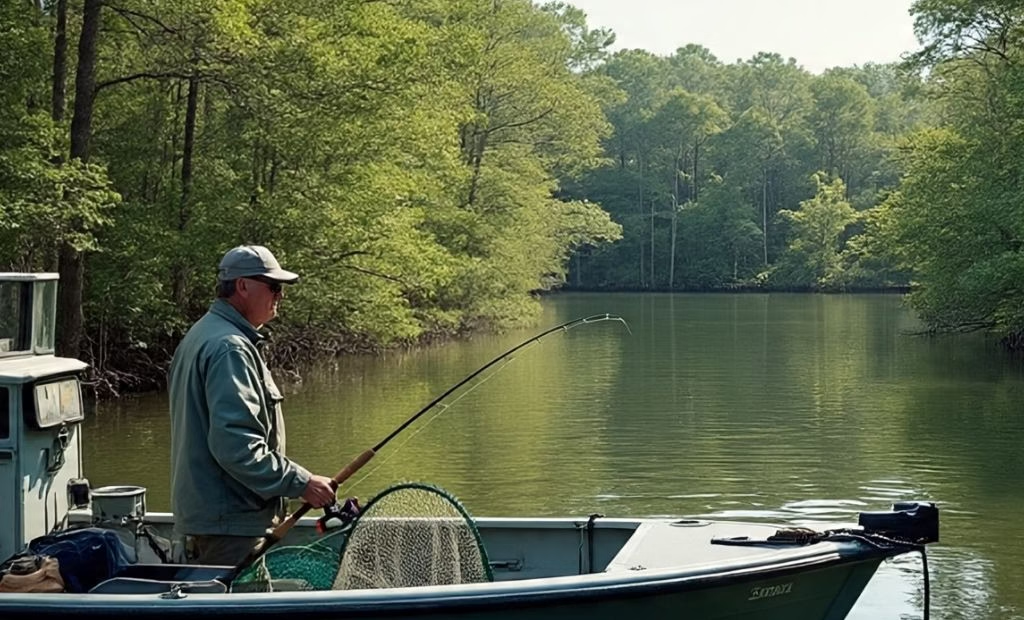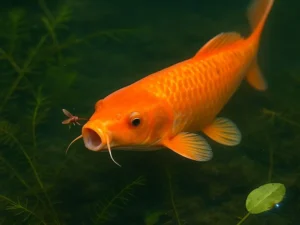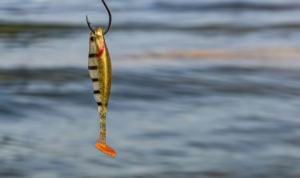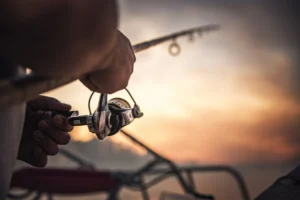Santee Cooper Rig the sport of fishing has always been creative. Whether it’s bending wire, cutting plastic baits, or switching out hooks, every angler ultimately starts trying to find the perfect presentation that will get fish to bite. Some adjustments essentially affect how people fish, while others have minimal impact. The Santee Cooper Rig is part of that second group. Developed on the famous catfish waterways of South Carolina, this simple rig revolutionized the way anglers tackled bottom fishing for catfish. It made one of the most productive fisheries in the country out of a difficult, snag-filled environment.
The Story Behind the Santee Cooper Rig
To understand this rig, you have to understand its home seas. Engineers created South Carolina’s Santee Cooper Lakes, Lake Marion, and Lake Moultrie by damming the Santee and Cooper Rivers in the 1940s. This massive hydroelectric plant flooded vast swaths of forest, leaving behind underwater timber, deep waterways, and countless hiding places for fish. Catfish took off very immediately. Blue cats got large and the habitat was abundant. Flatheads prowled the timber. Channel cats covered every space between.
Why It’s So Effective
The real strength of the Santee Cooper Rig lies in its simple yet highly effective design. It tackles several problems that catfish fishermen face at the same time. Keeping the bait just above the bottom will make the offering more attractive to fish that usually feed close to the substrate but prefer to hit at something visible, clear, and free from mud, weeds, or decaying stuff. The floating bait also reduces snags by allowing it to glide over timber, rocks, and other underwater dangers that typically claim rigs and hooks.
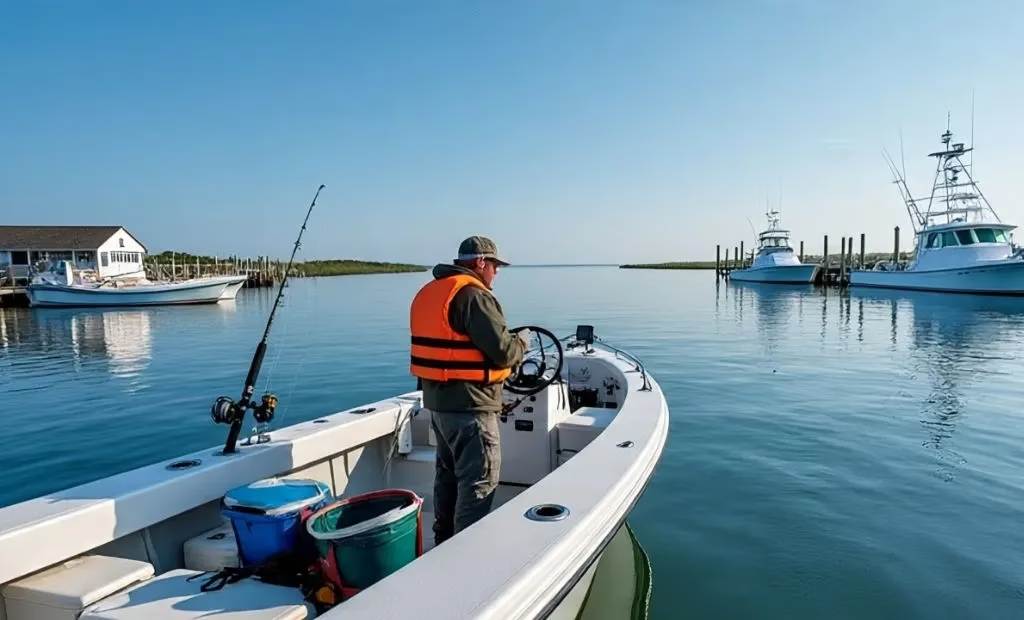
What You Need to Tie It
Tie a Santee Cooper Rig is simple and requires no special or challenging parts. Everything you need is available at almost any tackle store. To combat large catfish, start with a strong braided mainline, usually in the 50–80 lb test range, which will give you both sensitivity and strength. To manage abrasion while staying undetectable in the water, add a fluorocarbon or monofilament leader, typically 18 to 24 inches. A strong barrel swivel connects the leader to the mainline, and an egg or bank sinker heavy enough to stay on the bottom maintains your bait in the strike zone. To reduce friction in your knot, place a bead between the swivel and the sinker.
Step-by-Step: How to Tie the Santee Cooper Rig
You’ll always have the ideal setup if you carefully follow these steps:
1: Slide the weight on.
2: Put the Bead in There
3: Fasten the swivel.
4: Get the Leader Ready
5: Include the Float
6: Fasten the Hook
7:Link Swivel and Leader
That’s all it is: a snag-resistant, sanitized, and operational catfish rig.
Choosing the Right Gear
The proper equipment must be used with a Santee Cooper Rig in order to maximize its performance. In the 7- to 8-foot range, a medium-heavy to heavy power rod is ideal because it has a fast tip for strike sensitivity and enough backbone to fight strong catfish in deep water or dense cover. Because of their durability and control, serious catfish anglers favor round baitcasting reels with dependable, smooth drags, such as the iconic Abu Garcia Ambassadeur series. When fighting fish around structures, a fluorocarbon or monofilament leader adds abrasion resistance, while braided mainline is perfect for strength and transmitting every bump and bite. When combined, this arrangement allows you to detect even the smallest takes while controlling hard-pulling cats.
The Best Baits for the Job
When fishing the Santee Cooper Rig, the bait you select can mean the difference between a slow day and a full live well. Always aim to match your bait to the local forage available as well as the size of the catfish you are pursuing. Nothing beats fresh-cut chunks of carp, blueback herring, skipjack, or gizzard shad for catching big blue cats. Legal live baits like bluegill, sunfish, or small carp are frequently the preferred option for flathead catfish, which prefer a lively meal. Conversely, channel cats are more opportunistic and will easily consume shrimp, chicken liver, nightcrawlers, or even commercially made dip and stink baits.
How to Fish the Santee Cooper Rig
The key to fishing the Santee Cooper Rig is to move carefully through the appropriate spots. Start by locating popular locations for catfish, such as broad flats close to deep water, submerged ledges, or deep channels, where fish frequently congregate. Make a cast and drop your rig into the region you think the catfish are holding once you’ve identified a likely zone. From there, let your bait move steadily across productive water by slow trolling or natural wind. Catfish can hit in a variety of ways, so pay special attention to the tip of your rod.
Fishing from Shore
To use this rig efficiently, you don’t need a boat. It keeps bait visible in the current, off the bottom, and away from debris when viewed from the bank. thrown into river bends, creek mouths, or deep holes. Wait while the rig settles. That tiny float above the hook can speed up your bite rate even if you’re not drifting.
Expert Tips for Better Results
A few professional tweaks can make all the difference in maximizing the performance of a Santee Cooper Rig. Neither costly components nor specialized equipment are needed. However, it is among the most dependable, adaptable, and efficient rigs ever created for capturing catfish in American waters. Every time you go fishing, you’re increasing your chances of success by knowing how to tie it correctly, selecting the appropriate bait, and knowing when and how to fish it.
Common Mistakes to Avoid
Many anglers have trouble using the Santee Cooper Rig because of a few avoidable mistakes. A typical mistake is to use dull hooks. Catfish have robust, thick mouths, so a sharp hook is essential to ensure firm hooksets and prevent missed opportunities. Another mistake is to ignore the speed of the current. Drifting too slowly could prevent you from finding catfish that are actively eating, while drifting too quickly could cause the bait to move strangely and drive fish away. Finally, some anglers overburden their rigs.
Why Every Catfish Angler Should Learn It
Some rigs vanish when trends shift. The Santee Cooper Rig has survived for decades because it works everywhere catfish live. It performs equally effectively in reservoirs in the South as it does in major rivers in the Midwest. As user-friendly as it is for beginners, tournament pros still trust it. Any angler would want to maintain bait where fish can see it, enhance catches, and reduce annoyance.
Final thoughts
The Santee Cooper Rig isn’t particularly showy. There is no need for expensive parts or specialized machinery. It is, nevertheless, one of the most reliable, versatile, and effective rigs ever developed for catching catfish in American waters. By choosing the right bait, understanding when and how to fish it, and knowing how to tie it properly, you’re improving your odds of success each time you go fishing. Whether you’re drifting across a vast lake or fishing from the bank at night, this rig has everything it takes to help you land more and bigger catfish.

